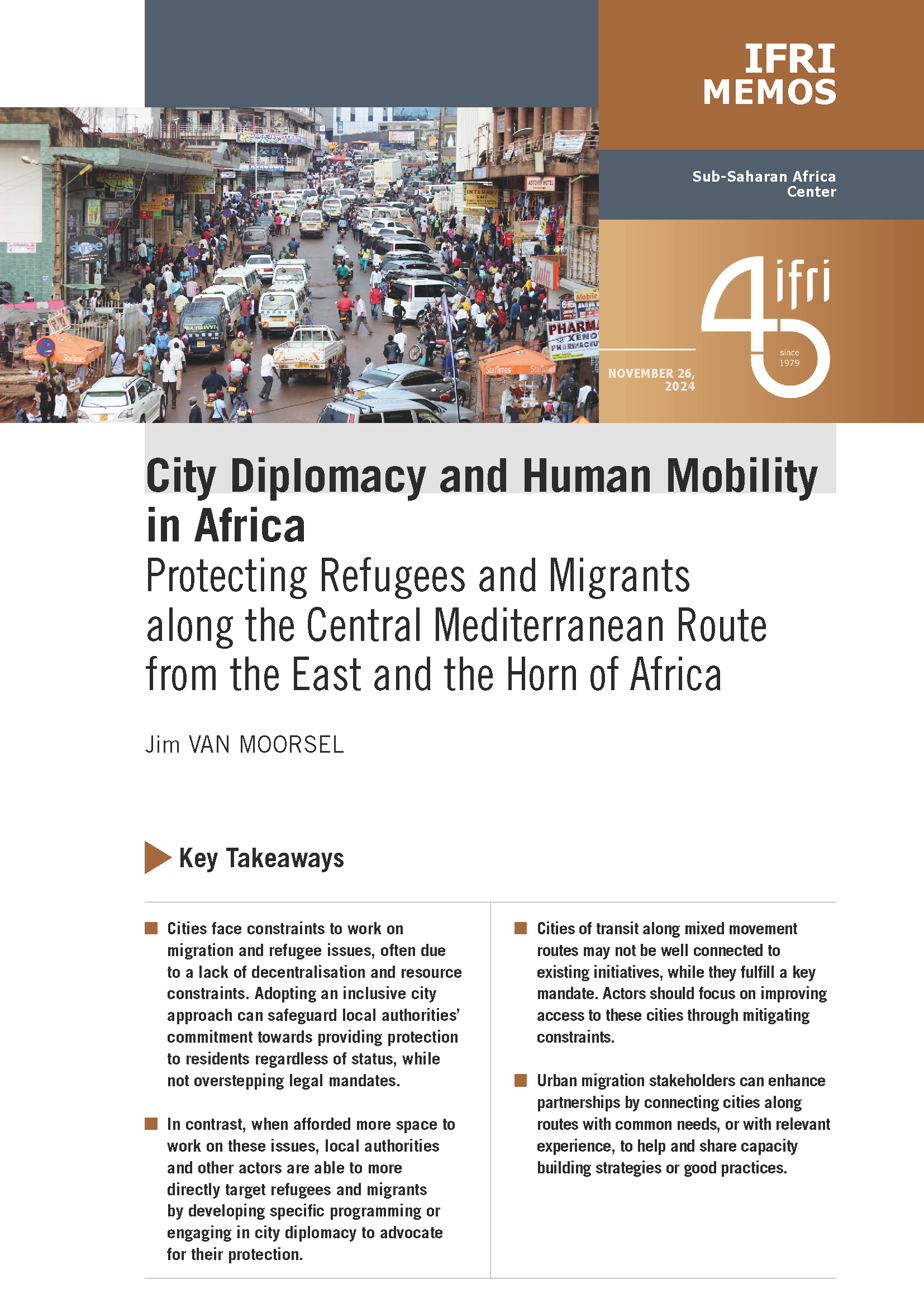City Diplomacy and Human Mobility in Africa. Protecting Refugees and Migrants along the Central Mediterranean Route from the East and the Horn of Africa

Cities face constraints to work on migration and refugee issues, often due to a lack of decentralisation and resource constraints. Adopting an inclusive city approach can safeguard local authorities’ commitment towards providing protection to residents regardless of status, while not overstepping legal mandates.

In contrast, when afforded more space to work on these issues, local authorities and other actors are able to more directly target refugees and migrants by developing specific programming or engaging in city diplomacy to advocate for their protection.
Cities of transit along mixed movement routes may not be well connected to existing initiatives, while they fulfill a key mandate. Actors should focus on improving access to these cities through mitigating constraints.
Urban migration stakeholders can enhance partnerships by connecting cities along routes with common needs, or with relevant experience, to help and share capacity-building strategies or good practices.
The aim of this conference was to take stock of current debates and initiatives on city diplomacy, particularly in East Africa. Based on a multi-stakeholder approach, it brought together experts from Africa and Europe involved in partnerships at municipal and local level to identify the challenges of city diplomacy and its concrete results. Particular attention was paid to empirical research and data on existing forms of city diplomacy and their results.
Here is a video summary of the initiative, led by Sina Schlimmer, research fellow and coordinator of the Governing the Urban Transition in Africa research programme at Ifri's Sub-Saharan Africa Centre.

Available in:
Themes and regions
ISBN / ISSN
Share
Download the full analysis
This page contains only a summary of our work. If you would like to have access to all the information from our research on the subject, you can download the full version in PDF format.
City Diplomacy and Human Mobility in Africa. Protecting Refugees and Migrants along the Central Mediterranean Route from the East and the Horn of Africa
Related centers and programs
Discover our other research centers and programsFind out more
Discover all our analysesWhen City Diplomacy Meets Geopolitics: A Framework to Help Cities Navigate Geopolitical Risk
Crises and the increasing polarization of international relations make political risk analysis an indispensable resource for internationally active public and private entities.
Barriers and Adaptations To Rural-Urban Mobility: A Focus of the Milk Value Chain in Peri-Urban Nairobi, Kenya
Kenya has per capita milk consumption of 110 litters of milk per year, making the inhabitants the largest milk consumers in sub-Saharan Africa. The daily sector requires functional infrastructure adapted to weather conditions, as well as affordable and easily accessible means of transport. However, only 18% of Kenya's road network is considered to be in good condition . As a result, farmers take alternative routes, reduce the number of trips, or limit their sales to the urban periphery. The daily transport of milk along the 47-kilometer urban-rural continuum in the peri-urban area north of Nairobi illustrates the reciprocal links between urban and rural areas and the dynamics of peri-urbanization. The challenges of the flow of milk along the value chain are intrinsically linked to those of mobility, which creates the connection between production, the exchange of goods and services, and consumption.
From Crisis Hotspots to Convening Powers. African Cities Launch Diplomacy to Create Climate Mobility Partnerships
African local governments cannot afford to turn into climate mobility hotspots without taking proactive action – drawing on local knowledge, convening power and access to affected communities.
The Evolution of City Diplomacy in Africa: Impact, Potential, and Ongoing Challenges of African Cities’ International Activities.
Over the past decades, African cities have ranked among the leading players in the evolution of city diplomacy. Indeed, municipalities across the continent have gone beyond simply adapting to shifting trends in international cooperation. They have been shaping the current partnership approach that sees local authorities worldwide working together to pursue shared goals and address common urban challenges such as climate change, migration, and social justice.









